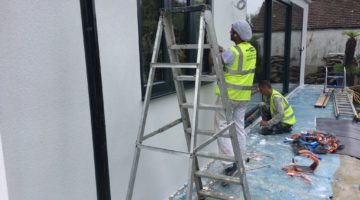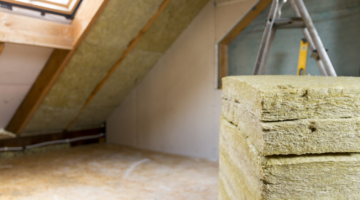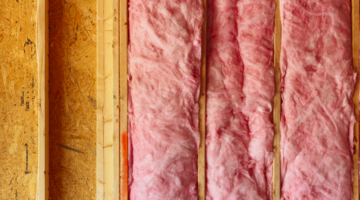
The Government’s flagship home improvement loan scheme, the Green Deal, has just been relaunched – but this time from the private sector. The first 3 loans have been issued according to Kilian Pender, the new Green Deal Finance Company chief executive.
The Green Deal 2017
In this blog, we wanted to try and draw out the key features of this new scheme:
• Rollout of the scheme will be slow, but the reason for this is that the GDFC want to get only quality installers signing up to it. As previously, this will be done under the same PAS2030 framework; however the GDFC will also be auditing a huge number of installs to ensure they are done to their own quality standards. The aim is to prevent cowboy builders entering the fray.
• Unlike traditional loans where the liability tends to be sat with the individual taking out the loan, in the Green Deal the GDFC attach the loan to the property. This means when it comes to selling the property, the new owner will be obliged to take on the existing Green Deal debt. This could put off potential buyers, knowing they are moving into a property with debt loaded on it; however we understand there are no early repayment charges, so when the homeowner does sell, they could pay back the loan (if they have the funds available) to prevent this being an issue.
• The average interest rate for the new Green Deal scheme is 9.3% APR. Typically, the loans will be paid back over 12 years for heating systems and 25 years for insulation measures. We did a quick search online and found Tesco offering a 10 year home improvement loan at the slightly better rate of 11.7% APR. Obviously if you can extend mortgages, then this blows both the Green Deal and other home improvement loans out the water, with rates as low as 1.25%. Even the 10 year fixed mortgage rates are 2.69%, so still a considerable improvement – but the Green Deal interest rate is certainly better than unsecured consumer loans, credit cards and payday loans,.
• How much can you borrow under the Green Deal home improvement scheme? Well this is where things get a little complicated, but basically it is all to do with the expected energy savings of installing a boiler and then the lifespan of the measure being installed. Say a new energy efficient boiler saves you £50 a year (which is quite a big saving to be honest!) then you would be allowed to borrow £50 x the lifespan of the boiler (12 years). £50 x 12 years = £600. Bear in mind the £600 needs to include the interest you pay on the loan – so unfortunately, while it will help, it certainly won’t cover the cost of your new energy saving solution.
• When we spoke to GDFC, they were keen to stress that they could combine Green Deal finance with a top-up loan. The top-up loan would be in the form of traditional finance, so liability would sit with the loan taker. It begs the question of why not to just take a bigger loan in the first place!
• The time it takes to get a loan can be lengthy. Unfortunately, there is a huge amount of legislation around the Green Deal framework and as such it takes a great deal of time to get the finance plans written. You can waiver the cooling off period, which definitely speeds things up, but a Green Deal loan will still take longer to organise, compared with other loans. It will still be quicker than getting a mortgage, however!.
We have been involved in the energy saving industry for several years, and while the availability of the new Green Deal loan is a welcome addition, we do worry that it will only be used in exceptional circumstances. Take, for example, a homeowner whose boiler breaks down in November – they may need heating the next day. Obviously, for them, the Green Deal will not be suitable since it takes too long.
One market I can see where it would be very popular is the rental market, because it means landlords can get their tenants to cover the cost of energy saving improvements, by allowing them to take out Green Deal loans to help cover the cost of new boilers or insulation systems. The tenants will pay the additional costs of the works via their energy bills.
We would love to get your thoughts on this one – do you think the Green Deal has a bright future or is it destined for failure like its predecessor?
Think we missed something? Do you have a different opinion?
Comment below to get your voice heard…












9.3% interest no thanks!
Hi Tony, it is indeed quite high! I think not much can be done to be honest simply due to the length of the loan. Fixing a loan over 10+ years is very difficulty due to the unpredictability of the economy and therefore the high interest rate of the green deal loan reflects that.
The rate of interest on this new green deal is a joke. Base rate is 0.25% ;but yet someone clever wants to charge 10%. As tony edwards said below, thanks but no thanks. I’d rather pay for a new boiler and insulation with a zero % interest free card that I can get for 40 months.
This iteration of the green deal will also fail because there is no good reason to borrow money at a high rate of interest when it doesn’t even cover the whole requirement. Those in socio-economic class C and up will already see the benefits and will be in a position to borrow at a far more favourable rate. Groups C- and lower will still not be able to borrow money even if they are aware of the benefits.
Regarding the suggestion that BTL landlords will have their tenants take out their loans, This is even less likely. No sane landlord would involve tenants in any such discussion. Most of us would absolutely reject the situation where the tenant tries to have a green deal loan because the mortgage lender would preclude any third party interest in the property. If there are measures that will improve the property then the LL can fit insulation and reclaim the costs from their tax liability. If the boiler fails they would fit a new improved one anyway because they are obliged to and again claim the costs from the taxman.
What a load of rubbish. The Green Deal Finance Bank take 3% of the loan, then you need a £150.00 EPC, on top of that £200.00+ to the green Deal Provider. So that’s almost £500.00 before a single item is installed. Every single company that worked in the Green Deal has gone to wall, leaving people with bills in excess of £6000 for a £1200.00 boiler.
Green SCAM
As I discussed with someone on the phone last night, are you the Green deal scheme or not?? I keep on getting cold calls about funding for windows, boilers and solar panels under your name ‘green deal’, I wish it would just stop. Having typed in ‘green deal’ you are the website that came up.
Hi Mr Hill. As we told you when you called, no we’re not. We are TheGreenAge, and we have only written about the Green Deal – we haven’t called you!
. “We did a quick search online and found Tesco offering a 10 year home improvement loan at the slightly better rate of 11.7% APR.”
Should that not be worse, rather than better?
This “New” Green Deal funded loan company uses untraceable pre-recorded nuisance calls to rope in new customers “press 5 to get a call back or 9 to be removed from the list”. But who’d want to deal with a company that resorts to underhand and illegal cold calling practices?
i keep getting calls from a company claiming the free insulation i had fitted a few years ago has been de certified,is this true or just another scam?